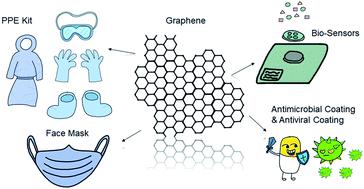当前位置:
X-MOL 学术
›
Environ. Sci.: Processes Impacts
›
论文详情
Our official English website, www.x-mol.net, welcomes your
feedback! (Note: you will need to create a separate account there.)
A case study of SARS-CoV-2 transmission behavior in a severely air-polluted city (Delhi, India) and the potential usage of graphene based materials for filtering air-pollutants and controlling/monitoring the COVID-19 pandemic
Environmental Science: Processes & Impacts ( IF 4.3 ) Pub Date : 2021-05-31 , DOI: 10.1039/d1em00034a Amrit Kumar Thakur 1 , Ravishankar Sathyamurthy 1 , Velraj Ramalingam 2 , Iseult Lynch 3 , Swellam Wafa Sharshir 4 , Zhenjun Ma 5 , Ganeshkumar Poongavanam 6 , Suyeong Lee 7 , Yeseul Jeong 7 , Jang-Yeon Hwang 7
Environmental Science: Processes & Impacts ( IF 4.3 ) Pub Date : 2021-05-31 , DOI: 10.1039/d1em00034a Amrit Kumar Thakur 1 , Ravishankar Sathyamurthy 1 , Velraj Ramalingam 2 , Iseult Lynch 3 , Swellam Wafa Sharshir 4 , Zhenjun Ma 5 , Ganeshkumar Poongavanam 6 , Suyeong Lee 7 , Yeseul Jeong 7 , Jang-Yeon Hwang 7
Affiliation

|
Globally, humanity is facing its most significant challenge in 100 years due to the novel coronavirus, SARS-CoV-2, which is responsible for COVID-19. Under the enormous pressure created by the pandemic, scientists are studying virus transmission mechanisms in order to develop effective mitigation strategies. However, no established methods have been developed to control the spread of this deadly virus. In addition, the ease in lockdown has escalated air pollution which may affect SARS-CoV-2 transmission through attachment to particulates. The present review summarizes the role of graphene nanomaterials, which show antimicrobial behavior and have antiviral efficacy, in reducing the spread of COVID-19. Graphene and its derivatives have excellent antimicrobial efficacy, providing both physical and chemical mechanisms of damage. Coupled with their lightness, optimal properties, and ease of functionalization, they are optimal nanomaterials for coating onto fabrics such as personal protection equipment, face masks and gloves to control the transmission of SARS-CoV-2 effectively. Biosensors using graphene can effectively detect the virus with high accuracy and sensitivity, providing rapid quantification. It is envisioned that the present work will boost the development of graphene-based highly sensitive, accurate and cost-effective diagnostic tools for efficiently monitoring and controlling the spread of COVID-19 and other air-borne viruses.
中文翻译:

严重空气污染城市(印度德里)SARS-CoV-2 传播行为的案例研究以及基于石墨烯的材料用于过滤空气污染物和控制/监测 COVID-19 大流行的潜在用途
在全球范围内,由于导致 COVID-19 的新型冠状病毒 SARS-CoV-2,人类正面临 100 年来最重大的挑战。在大流行带来的巨大压力下,科学家们正在研究病毒传播机制,以制定有效的缓解策略。然而,尚未开发出既定方法来控制这种致命病毒的传播。此外,封锁的缓解加剧了空气污染,这可能会通过附着在颗粒物上影响 SARS-CoV-2 的传播。本综述总结了石墨烯纳米材料在减少 COVID-19 传播方面的作用,石墨烯纳米材料具有抗菌行为和抗病毒功效。石墨烯及其衍生物具有优异的抗菌功效,提供物理和化学损伤机制。再加上它们的轻盈、最佳性能和易于功能化,它们是涂覆在个人防护设备、口罩和手套等织物上以有效控制 SARS-CoV-2 传播的最佳纳米材料。使用石墨烯的生物传感器可以以高精度和灵敏度有效检测病毒,提供快速定量。预计目前的工作将促进基于石墨烯的高度灵敏、准确和具有成本效益的诊断工具的开发,以有效监测和控制 COVID-19 和其他空气传播病毒的传播。使用石墨烯的生物传感器可以以高精度和灵敏度有效检测病毒,提供快速定量。预计目前的工作将促进基于石墨烯的高度灵敏、准确和具有成本效益的诊断工具的开发,以有效监测和控制 COVID-19 和其他空气传播病毒的传播。使用石墨烯的生物传感器可以以高精度和灵敏度有效检测病毒,提供快速定量。预计目前的工作将促进基于石墨烯的高度灵敏、准确和具有成本效益的诊断工具的开发,以有效监测和控制 COVID-19 和其他空气传播病毒的传播。
更新日期:2021-06-24
中文翻译:

严重空气污染城市(印度德里)SARS-CoV-2 传播行为的案例研究以及基于石墨烯的材料用于过滤空气污染物和控制/监测 COVID-19 大流行的潜在用途
在全球范围内,由于导致 COVID-19 的新型冠状病毒 SARS-CoV-2,人类正面临 100 年来最重大的挑战。在大流行带来的巨大压力下,科学家们正在研究病毒传播机制,以制定有效的缓解策略。然而,尚未开发出既定方法来控制这种致命病毒的传播。此外,封锁的缓解加剧了空气污染,这可能会通过附着在颗粒物上影响 SARS-CoV-2 的传播。本综述总结了石墨烯纳米材料在减少 COVID-19 传播方面的作用,石墨烯纳米材料具有抗菌行为和抗病毒功效。石墨烯及其衍生物具有优异的抗菌功效,提供物理和化学损伤机制。再加上它们的轻盈、最佳性能和易于功能化,它们是涂覆在个人防护设备、口罩和手套等织物上以有效控制 SARS-CoV-2 传播的最佳纳米材料。使用石墨烯的生物传感器可以以高精度和灵敏度有效检测病毒,提供快速定量。预计目前的工作将促进基于石墨烯的高度灵敏、准确和具有成本效益的诊断工具的开发,以有效监测和控制 COVID-19 和其他空气传播病毒的传播。使用石墨烯的生物传感器可以以高精度和灵敏度有效检测病毒,提供快速定量。预计目前的工作将促进基于石墨烯的高度灵敏、准确和具有成本效益的诊断工具的开发,以有效监测和控制 COVID-19 和其他空气传播病毒的传播。使用石墨烯的生物传感器可以以高精度和灵敏度有效检测病毒,提供快速定量。预计目前的工作将促进基于石墨烯的高度灵敏、准确和具有成本效益的诊断工具的开发,以有效监测和控制 COVID-19 和其他空气传播病毒的传播。











































 京公网安备 11010802027423号
京公网安备 11010802027423号